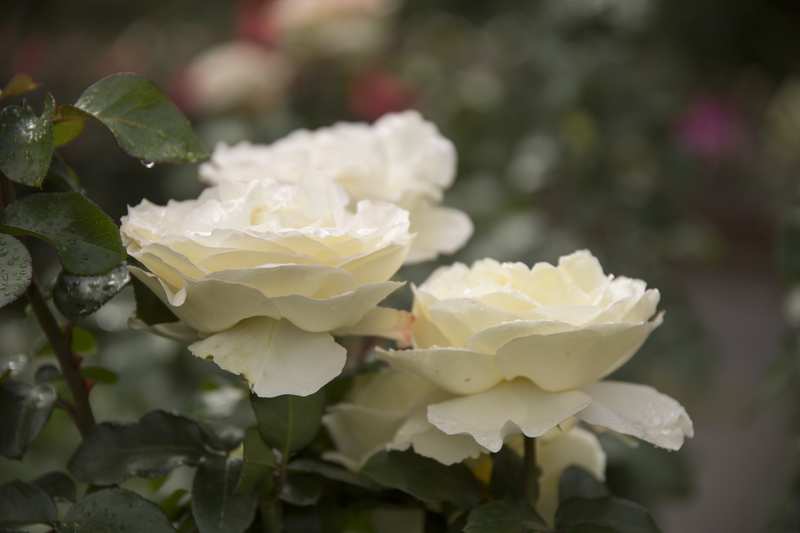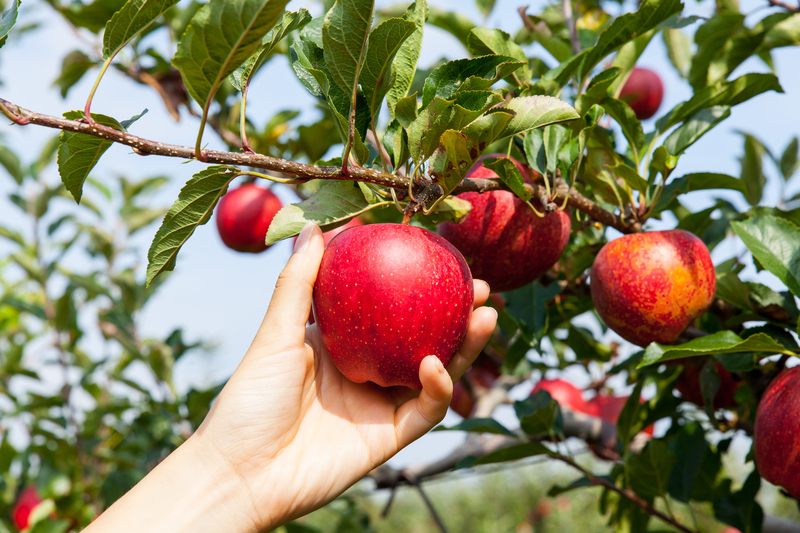Essential Orchid Care Practices
Posted on 13/06/2025
Essential Orchid Care Practices: A Complete Guide for Beautiful Blooms
If you've ever admired the intricate beauty of orchids, you might feel intimidated at the thought of growing these exotic plants at home. However, understanding and implementing essential orchid care practices can help anyone keep these stunning flowers healthy and thriving. In this comprehensive guide, you'll learn proven strategies, practical tips, and expert secrets for orchid success. Whether you're a beginner or a seasoned collector, mastering proper orchid care is your ticket to lush leaves and breathtaking blooms year after year.

Understanding Orchids: The Basics
Orchids are a diverse family of plants known for their unique, delicate flowers and wide-ranging species. With over 25,000 species and more than 100,000 hybrids, they offer a vast array of colors, sizes, and forms. The most common types of orchids grown by hobbyists include Phalaenopsis (Moth Orchids), Cattleya, Dendrobium, and Oncidium. Each variety may require subtle differences in care, but the foundational orchid care practices remain largely the same.
Are Orchids Hard to Care For?
Contrary to popular belief, home orchid care is not as difficult as you might think. Once you learn about their preferred environment and daily needs, orchids can be relatively low maintenance compared to many houseplants. Let's break down the basics:
- Light: Bright, indirect sunlight is crucial.
- Water: Allow the potting medium to dry slightly between waterings.
- Humidity: Maintain moderate to high humidity for most orchids.
- Temperature: Avoid extreme fluctuations; most prefer 65-75?F (18-24?C).
- Potting Mix: Use specialized orchid medium for strong root health.
Key Orchid Care Practices for Beginners
1. Finding the Right Location
The key to successful orchid growing starts with selecting the right spot in your home. Orchids generally crave plenty of light but can suffer from too much direct sun. For most varieties, an east-facing window is ideal because it provides gentle morning sun without the harsh afternoon rays.
- Phalaenopsis and Paphiopedilum: Prefer medium light; east or shaded south windows are excellent.
- Cattleyas and Dendrobiums: Require brighter light; south or west windows with filtered sun work well.
If natural light is lacking, try supplementing with a grow light specifically designed for orchids. Watch your plant's leaves for clues--deep green leaves may indicate insufficient light, while yellowish-green leaves often signal perfect conditions.
2. Achieving Optimal Watering Habits
Overwatering is the most common reason orchids fail indoors. Unlike most houseplants, orchid roots need both access to water and air. To get it right:
- Check the Medium: Only water when the top 1-2 inches of the potting medium feels dry.
- Use Room Temperature Water: Cold water can shock the roots.
- Drainage is Essential: Always empty saucers to avoid waterlogged roots.
Pro Tip: In general, orchids do better with underwatering than overwatering. Most benefit from thorough watering once a week during growing season and less during dormancy.
3. Maintaining Proper Humidity Levels
Orchids, especially tropical types, thrive in humidity levels between 40% and 70%. In the average home, especially in winter, air can be too dry for orchids to flourish. Boost humidity with these methods:
- Humidity trays: Place a shallow tray filled with water and pebbles beneath your plant pot (but not touching the pot directly).
- Room humidifiers: A small humidifier nearby keeps air moist and comfortable for orchids.
- Misting: Lightly mist leaves in the morning if your space is particularly dry.
4. Mastering Temperature Control
Orchids are sensitive to drastic temperature swings. For consistent orchid plant care, keep nighttime temperatures slightly cooler than daytime but avoid anything below 55?F (12?C).
- Temperature for Phalaenopsis: 60-85?F (16-29?C), with nights on the cooler side.
- Temperature for Cattleyas and Dendrobiums: 55-75?F (13-24?C).
Keeping orchids away from radiators, air vents, and open windows protects from stress and leaf drop. Temperature differences between day and night also stimulate blooming in many species.
Advanced Orchid Care Techniques
5. Selecting the Right Orchid Potting Medium
Unlike typical houseplants, orchids require specialized potting mixes that support healthy root growth and adequate drainage. The best orchid potting mixes contain:
- Pine bark
- Coconut husk chips
- Sphagnum moss
- Perlite
- Charcoal
Repot your orchid every 1-2 years or when you notice decomposing media. Always use clean tools, and gently trim any dead roots. When repotting, choose a clear pot with ventilation holes to allow roots to photosynthesize and stay healthy.
6. Feeding and Fertilizing Orchids
Orchids are light feeders. For best flowering and leaf health, use a balanced orchid fertilizer (20-20-20) or a mix specifically tailored for your orchid variety. Important points to remember:
- Fertilize at half-strength every 2-4 weeks during active growth (usually spring and summer).
- Reduce or eliminate fertilizing during dormancy or rest periods.
- Flush the potting mix monthly to remove salt buildup from fertilizer.
Never fertilize a dry orchid; always water first to avoid root burn.
7. Promoting Reblooming and Flower Care
After your orchid's blooms fade, don't toss the plant! Most orchids, especially Phalaenopsis, can bloom again each year with the right care. Here's how:
- Cut the spike: For Phalaenopsis, cut just above a node on the old spike to encourage a new flower shoot. For other types, cut the spike at the base.
- Provide a cooler rest: Some orchids need cooler nights for several weeks to trigger reblooming.
- Resume regular care: Continue providing proper light, water, and humidity as before.
Common Orchid Problems and How to Solve Them
Even with the most attentive orchid care routine, problems can arise. Here's how to recognize and solve the most frequent issues:
Yellow Leaves
- Possible cause: Overwatering, low humidity, or sudden environmental change.
- Solution: Adjust watering, raise humidity, and check for root rot.
Bud Blast (Falling Buds or Flowers)
- Possible cause: Sudden drafts, relocation, or underwatering.
- Solution: Place orchids in a stable environment away from abrupt temperature changes.
Root Rot
- Possible cause: Waterlogged medium or poor drainage.
- Solution: Repot in a fresh, airy potting mix and trim damaged roots.
Pests
- Common culprits: Mealybugs, scale, spider mites
- Solution: Wipe leaves with diluted rubbing alcohol, use insecticidal soap, or treat with neem oil.
Essential Orchid Care Tips for Every Season
Spring and Summer Orchid Care
- Increase watering and fertilizing as orchids actively grow.
- Watch for increased pest activity.
- Consider moving orchids outdoors in mild climates--but keep them shaded and protected from extreme rain or winds.
Fall and Winter Orchid Care
- Reduce watering and fertilization as growth slows.
- Monitor humidity and supplement if indoor heating dries the air.
- Do not panic if leaves drop or yellow slightly as some seasonal shedding is normal.
- Provide a cooler period (if required by species) to promote flower spike development.

FAQs: Orchid Plant Care Best Practices
- How often should I water my orchid? Water once weekly for most varieties, adjusting based on environment and potting medium dryness.
- Do orchids need special pots? Yes! Choose pots with ample drainage and, ideally, transparent sides to monitor root health.
- Why are my orchid's leaves turning limp? This could signal root rot or insufficient watering. Inspect roots and adjust your care routine accordingly.
- How do I get my orchid to rebloom? Ensure proper light, nutrition, and if needed, a brief period of cooler night temperatures to stimulate new spikes.
- Should I cut the spike after the flowers fade? For Phalaenopsis, yes--cut above a node. For others, trim at the base.
Conclusion: Mastering Orchid Care Practices for Lasting Beauty
Caring for orchids is a rewarding hobby that brings a touch of the tropics into any home. By applying these essential orchid care practices--from light and watering to humidity, temperature, and repotting--you'll give your orchids the best environment to thrive. Remember, each orchid species may have slight personal preferences, so stay attentive and adjust as needed for optimal health. Above all, patience and observation are your greatest allies; with time, you'll be rewarded with long-lasting blooms and vibrant foliage that will delight year after year. Happy growing!

